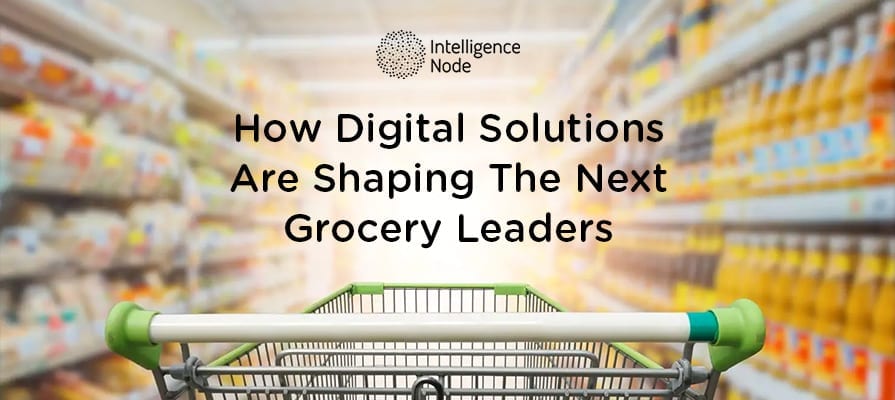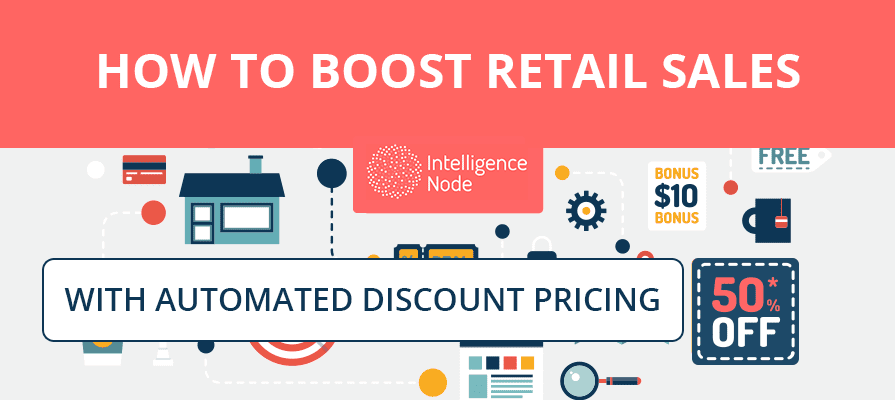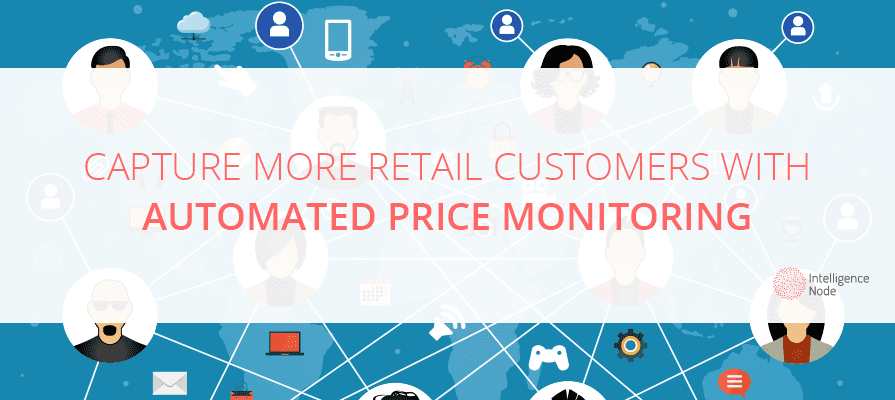2018’s grocery price wars have pitted technology against tradition, convenience against loyalty, and private labels against well-loved brands. Factors abound in determining which brands managed to reach success in this quickly evolving industry.
Before crowning any victors in this battle, however, it’s worth answering an essential question first.
What constitutes success in the grocery price wars?
The answer is a lot more nuanced than you may initially think, and it extends far beyond simply having low prices. In fact, a Retailer Preference Index report published by Dunnhumby in January 2019 examines grocery chains’ 2018 through a uniquely rigorous lens. The following examination and ranking is based largely on their findings.
According to the report, customer preference hinges on two distinct – yet equally vital – factors:
- Financial performance – sales growth, market share, sales efficiency per square foot
- Emotional connection – trust, satisfaction, the intensity of loyalty, the likelihood of recommendation
These two key factors rely in varying degrees on seven measurable “preference drivers,” which reflect recent customer needs and industry trends in an increasingly shifting grocery landscape. Retailers who have been able to optimize their performance in the more significant of these pillars find themselves comfortably perched atop the ranking.
The Seven Pillars of customer preference:
In order of overall impact
- Pricing. While more hoopla may surround other pillars, price remains a top priority. As Walmart CEO Doug McMillon so eloquently puts it, “Price still matters. There are a lot of Americans that are counting every penny and every dime.” Price transparency costs relative to other retailers, and prices of natural/organic products legitimately matter to customers. Below, we’ll expound further on the importance of smart pricing.
- Quality. It goes hand in hand with Pricing as the pillars with the deepest influence on customers. The umbrella term “Quality” conveniently covers many interrelated facets: freshness of the produce, taste of prepared food, hygiene of stores, treatment of shoppers, and availability of high-end products – to name but a few. In terms of customer preference, it’s worth noting that value perception correlates directly with quality and inversely with price.
- Digital. As the media hype surrounding it aptly suggests, Digital is no longer just a good-to-have channel. Retailers with digital platforms that best capture an in-store sense of exploration and successfully tailor to personal tastes will win out. That is, provided the platform is convenient, intuitive, and supports products with strong value perceptions.
- Operations. Back to the basics: How are products organized? Are items consistently stocked and priced? What kind of variety does the store boast? All these elementary questions still matter, and they’re being handled in increasingly innovative ways with the rise of Digital.
- Convenience. Nearby locations and wide product selections mean that customers don’t need to turn elsewhere for any shopping needs. The problem? With both eCommerce and the assortment of retail options rising, customers are as willing as ever to dip their feet in multiple pools.
- Discounts, Rewards, & Info. Under the glare of a supermarket’s fluorescent light, nothing’s quite as friendly as a useful coupon or an exclusive sale. Stores who get it right see grand profits; those who don’t can see dollar waste up to 71%.
- Speed. A fast checkout is really just the cherry on top. Speed doesn’t have a positive correlation with financial success, and many of the most beloved chains have all but sacrificed speed for higher pillars. That said, it certainly doesn’t hurt user experience or general optics.
Now, it should be noted that these values are not necessarily ubiquitous. A study done by Market Force, for instance, separates the Quality and Operations pillars into several distinct categories pertinent to user experience and doesn’t factor prices as heavily in determining customer attitudes.
That said, Dunnhumby’s investigation is as meticulously thought out as any, and its conclusions tend to reflect overarching industry findings (including that of Market Force).
And without further ado…
2018’s top grocery retailers
Having listed the pillars, it’s worth realizing that no retailer can conceivably lead the pack in every pillar. After all, each grocery chain has only so many resources. The key is strategically allocating these finite resources in profitable ways.
In other words, each retailer has to make certain tradeoffs in its commitment to these Pillars. Some simply do it better than others.
Trader Joe’s. This unconventional grocer is the winner in value perception primarily for its commitment to low prices and high quality. With its optimal store layout and complete eschewing of Digital and several Convenience factors, Trader Joe’s has been able to focus its efforts (and dollars) on in-store experience and top-of-the-line affordability. This, along with its uniquely laid back vibe and human touch, has cultivated a particularly niche private brand that has built unbreakable emotional connections with customers nationwide.
Wegmans. With the top Quality ranking and a high Convenience score, Wegman’s has earned its way into the top five overall. But here’s where things get interesting: Wegman’s isn’t in the first quartile in any other Pillar and ranks notoriously low for Pricing. This is where the notion of a tradeoff is most evident: Wegman’s doesn’t need unbeatable prices because its products are worth their costs. According to Market Force, this unwavering commitment to high-quality items and in-store experience alone has vaulted Wegman’s to “America’s favorite grocery retailer.”
Costco. While Wegman’s demonstrates that success doesn’t depend on low prices, Costco shows it still can. The ambitious bulk retailer scores high in each of the top four Pillars – Price, Quality, Digital, and Operations – with a particular commitment to leading the pack in pricing. And if you’ve ever been to Costco, you’ve likely witnessed firsthand how little speed matters to sales growth.
Amazon. The digital giant is cited as “having a downward pressure on [grocery] pricing” with its cost comparisons and Prime membership perks. Despite not ranking high for Quality or Convenience, CNN Business believes that Amazon’s “tested playbook for undercutting established players’ prices [is all it takes] to grab market share.” With technological tools and innovative data crunching at its disposal, Amazon’s spot on this list feels secure for years to come.
And a few others…
- HEB – This Texas-based retailer has built a devoted following with high-quality customer-targeted offerings and a calculated approach to Price.
- Aldi and Lidl – Two German discount retailers with a limited variety of products, but listed at unbeatable prices that even rival Amazon’s influence on the price war.
- WinCo – Despite being a minor player out west, it scores well due to its “combination of Price and emphasizing Quality in the right places with a focus on the retail basics.”
What exactly are those “right places,” though? And how does a retailer make those decisions?
High-value perception depends on more than low prices alone
That much is clearly evidenced by Wegman’s recent success. Furthermore, simply focusing on certain pillars isn’t enough either. Sure, half of the retailers who excel in both Digital and Discounts rank in the top quartile overall, but the other half in both category score nearer to the bottom.
Thus, the key doesn’t necessarily lie with which pillars you prioritize, but how you prioritize them. You’re can’t just cut prices; you need to know which prices to cut and by how much. Throwing darts at the board with product decisions and hoping something sticks is how you end up in the 3rd and 4th quartiles.
Since similar macro approaches can yield wildly varying results based on the micro details, retailers are carefully refining their plans to stay ahead of their competition. And in this day and age – when Amazon of all companies is at the cutting edge – this means turning to solutions founded in advanced technology.
Winning the grocery price war requires tech strategies infused with data and dynamic pricing
Robot cashiers may make headlines, but AI has a much wider range of applications to optimize a grocer’s results.
Companies of all sizes (see: WinCo) are implementing technology for a host of forward-thinking initiatives: “assortment planning, big data and data processing, customer insights, customer loyalty, e-commerce, in-store analytics, in-store marketing technology, price optimization, promotion optimization, and promotion targeting.”
As the use of tech in analyzing grocery data becomes more ubiquitous, Planet Retail director Boris Planer’s proclamation that the “ability to connect with the customer and mine data is going to be one of the main capabilities for the future” rings as true as ever.
For instance, major grocery mogul Kroger has been lauded for moving to the forefront of digital progression which includes “strategic investments” such as “customer-centric technology solutions… space-optimized stores… and smart-priced products.”
More significantly, tech-fueled dynamic pricing has become one of the primary drivers pushing Amazon to the forefront of this grocery war. Such a fluid price tag approach can simultaneously benefit revenue while providing customers improved offers in real time. Moreover, the retail consultants at Plant Retail found that around 78% of retailers are seeking better ways to apply fluctuating prices and prudent discounts.
However, as Planer himself realizes, “retailers are beginning to understand that it would be a big mistake to think they can do it on their own.”
Intelligence Node is here to help retailers embrace tech solutions
Absorbing the endless sea of data gathered from the distinct factors of pricing strategy is a task requiring time and effort, as well as a high degree of tech vigilance. Intelligence Node has created solutions to take this burden off your plate and streamline the entire process to improve your overall competitive advantage.
For instance, the Inoptimizer ® tool is an efficiency-minded price optimizer built to put retailers in the best position both for their customers and relative to the competition. It automates retail pricing and inventory management, reads market trends to recommend the most profitable prices, and traces product histories to fortify future strategizing.
That’s not even to mention 360°Pricing™, which examines price elasticity, inventory levels, competitive pricing, and more to better determine optimal markups and markdowns
A further look at the Intelligence Node solutions will highlight numerous useful benefits, such as trend tracking, assortment intelligence, and user-friendly data feeds. But all of this is all to emphasize a simple truth: the best grocery retailers haven’t reached the top by accident. Trader Joe’s, Wegmans, Amazon, Costco, and W-E-B have developed superior business models that utilize the Pillars to boost emotional connection and financial performance.
And with those tools firmly in hand, climbing to the top of the customer preference mountain becomes a much more attainable goal for your retail business.




